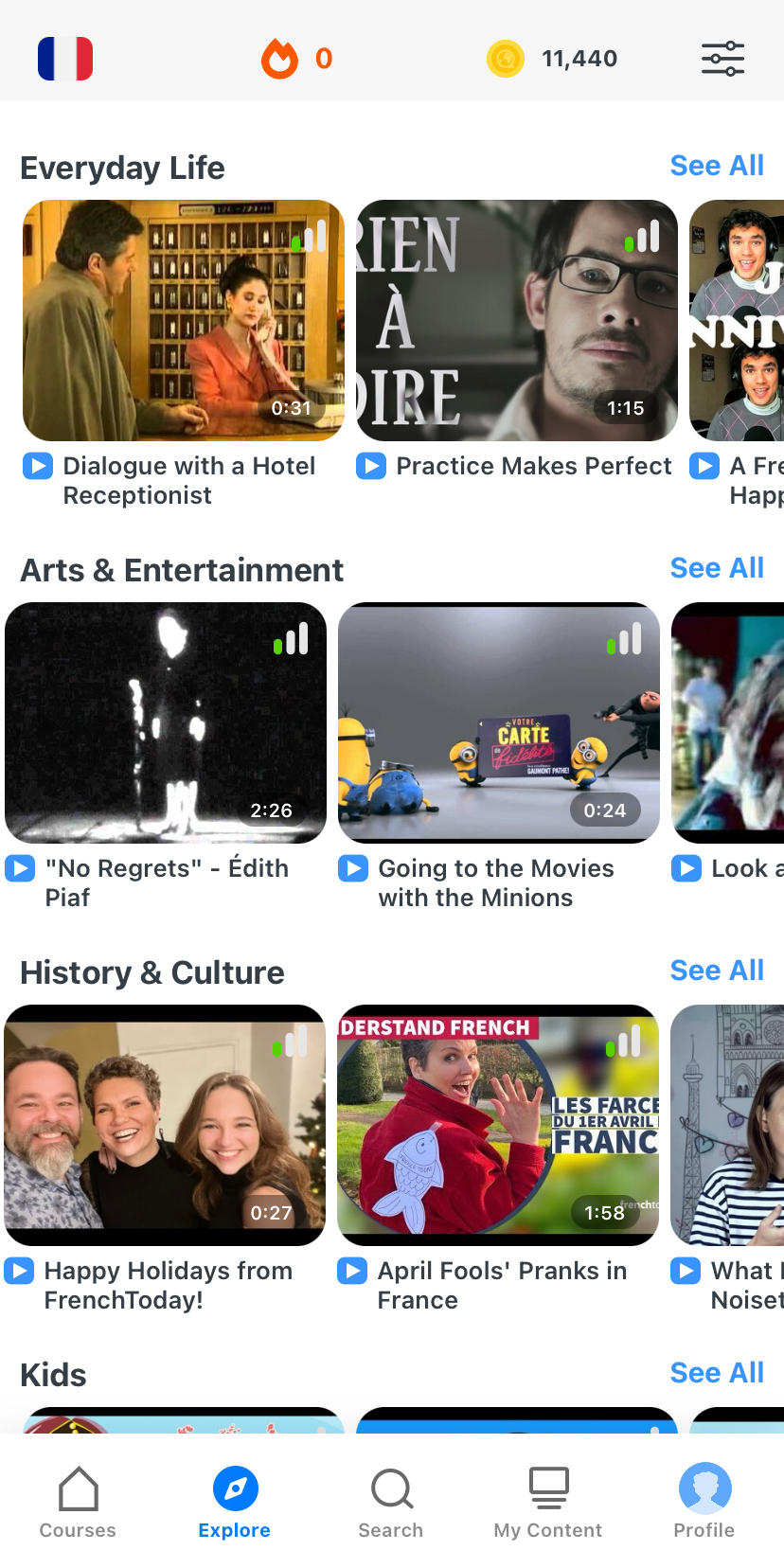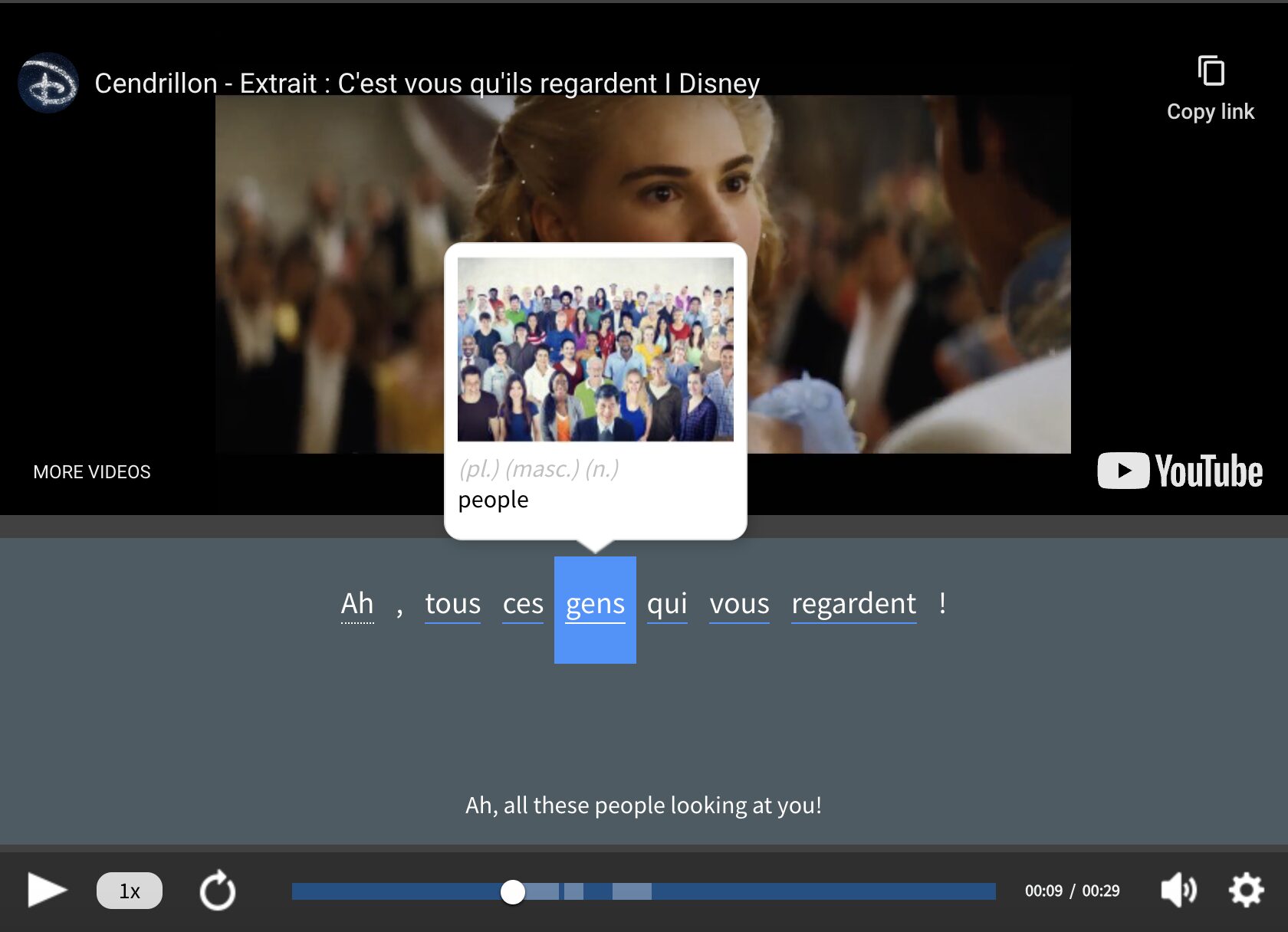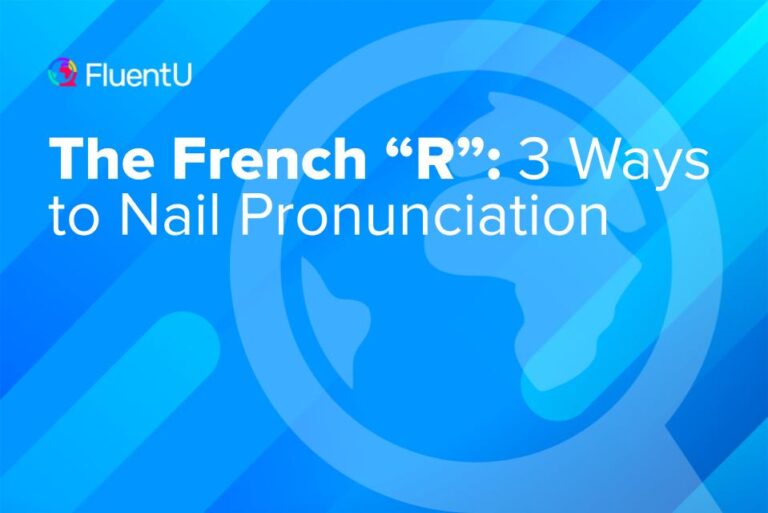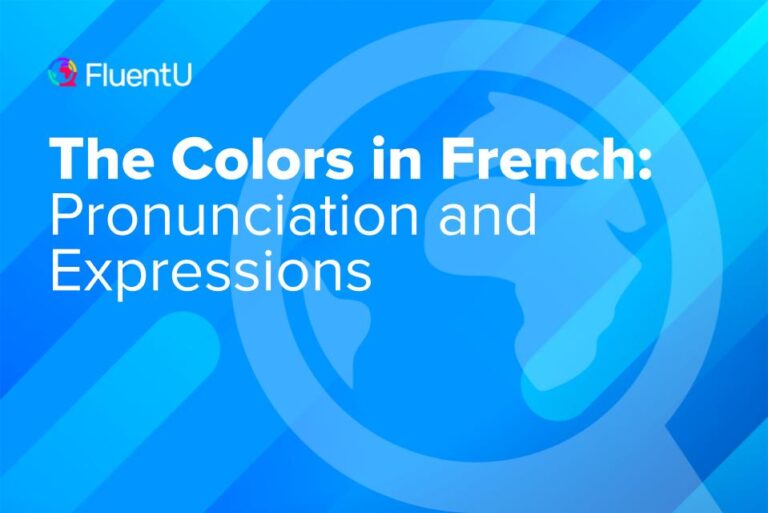Contents
- What is Québécois French?
- A Brief History of Québécois French
- What Makes Québécois French Different from the French in France?
- 1. There are some special nouns and verbs
- 2. The eating time vocabulary is different
- 3. The accent is different, too
- 4. There are different pronunciations
- 5. Questions are asked a bit differently
- 6. Québécois French uses tu a lot more
- 7. Québécois French has tried to erase English
- 8. Québécois French does use some English verbs, however
- 9. Québécois French also uses words influenced by English
- 10. French Canadians use on, not nous
- 11. Là is used liberally as an informal marker
- 12. Ben is very common
- 13. Fin has many more meanings in québécois
- 14. Bienvenue is way more common than you’d think
- 15. Being sociable sounds a bit different
- 16. There are different money words
- 17. Canadian French has its own unique idioms
- And One More Thing...
Québécois French vs. French in France: 17 Key Differences
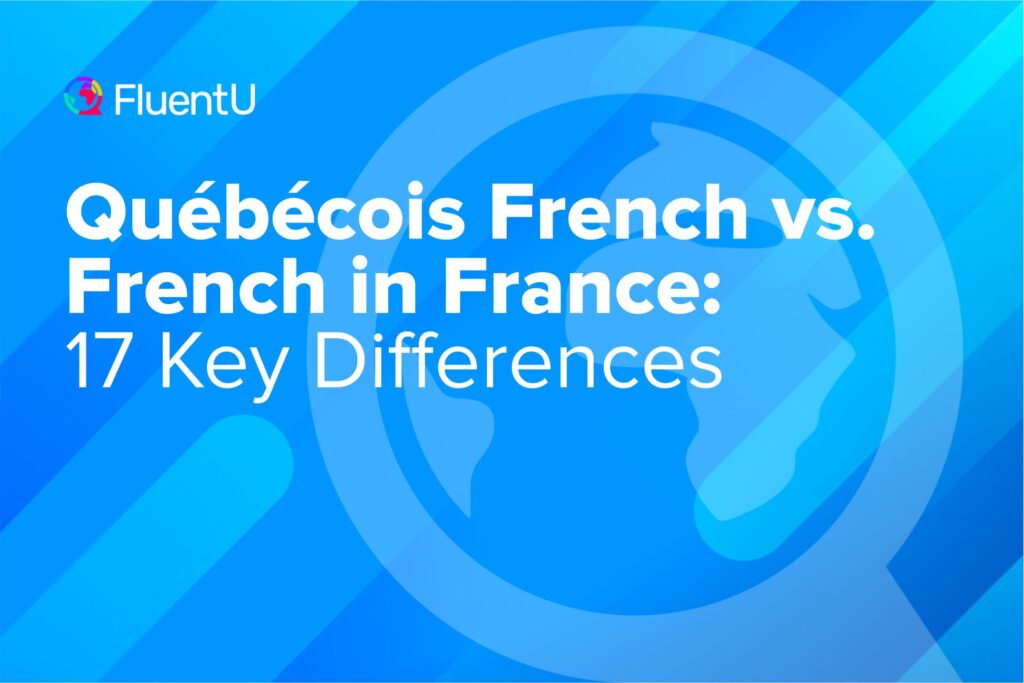
Stepping into Montréal, you might quickly notice that the French here sounds different—full of unique rhythms and expressions. Québécois French, shaped by centuries of history and isolation from Europe, has evolved into a distinct and vibrant dialect. From its charming accent to its creative vocabulary and idioms, it offers an entirely fresh perspective on the language.
Download: This blog post is available as a convenient and portable PDF that you can take anywhere. Click here to get a copy. (Download)
What is Québécois French?
Québec French, also commonly referred to as québécois French, is based on the French that was spoken in Paris during the 17th and 18th centuries. It’s the most well-known of the several dialects of Canadian French, along with the likes of Acadian French and Métis French.
A Brief History of Québécois French
During the 17th and 18th centuries, when France was expanding its colonial reach throughout the globe, Québec became the center of the Francophone world as new settlers grew the local population.
Notably, many of the settlers in Québec (then known as “New France”) used the standard French spoken by France’s royal and aristocratic classes. After the British took over the Canadian colonies according to the stipulations of the Articles of Capitulation of Montreal in 1760, the French speakers in Québec became isolated from their European counterparts.
However, in 1867, Québec began to industrialize and open up to outside trade. Because business transactions were often conducted in English, Québec French had to incorporate vocabulary from Canadian and American English to make up for any linguistic gaps.
During the 20th century onward, Québec French continued to evolve with the political and economic climate of the province. Laws were passed to govern the use of French in the province, with the Office québécois de la langue française (Quebec Board of the French Language) created for this purpose.
Today, French is the native tongue for 85.5% of Québec’s population as of 2021. English and French even have equal legal status in the government, though be forewarned: Discussions about the lingua franca in Québec can be highly charged, to put it mildly.
What Makes Québécois French Different from the French in France?
While both Québec and France use the same grammar rules, verb conjugations and sentence structures, there are big differences in the accent, pronunciation and vocabulary. It almost sounds entirely different from the French you’ve learned or heard, so Quebec may be challenging for you to navigate, as it was for French-speaking British comedian Paul Taylor:
1. There are some special nouns and verbs
Here are some of the most prominent vocabulary terms used in Canadian French but not the French from France:
| Québécois French | French in France | English |
|---|---|---|
| un char | une voiture | car |
| un breuvage | une boisson | a drink/beverage |
| une blonde | une petite-amie
copine | girlfriend |
| un chum | un petit ami
copain | boyfriend; buddy (between guys) |
| la fête | l'anniversaire | birthday |
| la job | le boulot | job |
| une sacoche | un sac à main | a purse |
| un cellulaire | un portable | cell phone |
| un chandail | un pull
un t-shirt | sweater/t-shirt |
| la gomme | le chewing-gum | bubblegum |
| barrer | fermer à clé | to lock the door |
| jaser | bavarder | to natter; to gossip |
| magasiner | faire du shopping | to go shopping |
| faire le party | sortir en soirée | to go out and party |
| clavarder | chatter sur internet | to chat online |
Check out this video to see a comparison of words used by a French speaker from France vs. Québec:
It’s worth mentioning that Canadian French also has its own unique set of religion-related swear words that may be confusing to French speakers from France. For example, tabarnak normally means “tabernacle” (an ornate box where the Communion host is kept), but in Québec, it’s a very profane swear word.
2. The eating time vocabulary is different
Eating time vocabulary in Québec is quite different from that used in France:
| Québécois French | French in France | English | Eating Time |
|---|---|---|---|
| le déjeuner | le petit-déjeuner | breakfast | before midday |
| le dîner | le déjeuner | lunch | between midday and 5 p.m. |
| une collation | un goûter | snack | between 5 p.m. and 7 p.m. |
| le souper | le dîner | dinner/evening meal | from 7 p.m. onwards |
3. The accent is different, too
People say that the québécois accent is chantant (sing-songy) compared to other Francophone accents.
Like any language, there’s no standard Canadian French accent, as every city and town has its own particular way of talking and unique slang.
4. There are different pronunciations
- Il. One characteristic of québécois French is the replacement of il (him or it) with the sound/letter y. It’s common to hear Y’est malade (he is sick) or maybe Y fait bon (it’s nice out).
- Elle. You may hear elle (she or it) replaced with the letter a and an extended a sound: a mal au ventre (her stomach hurts).
- Je suis. The chu sound to replace je suis (I am) is quite charming. You’ll hear Québécois saying chu fatigué (I am tired) or chu en retard (I am late).
- T and D. A really distinctive feature of québécois is that, before the letters i and e, the consonants t and d are pronounced differently.
T becomes ts, and d becomes dz. So, dîner (lunch) might sound like “dzîner” and canadien (Canadian) might sound like “canadzien.”
- Vowels. Québécois retains many of classical French’s original pronunciations, which no longer exist in France. Here are some examples. Listen carefully to the differences in pronunciation:
Québécois French French in France English moé moi me toé toi you ouais oui yes
You can learn about some of the different variations in pronunciation, as well as some other differences between the French spoken in France and québécois French in this FluentU YouTube video:
5. Questions are asked a bit differently
When asking questions in formal settings, Québec French uses vous (formal “you”) and says it exactly as you would in any other French-speaking area.
When kicking back or talking with one another in casual settings, there’s a little spin on sentence structure when asking questions.
See if you can spot the pattern:
| Québécois French | English |
|---|---|
| T'en veux-tu ? | Would you like some? |
| Tu m'écoutes-tu ? | Do you hear me? / Are you listening? |
| Tu t'en vas-tu ? | Are you going? |
Notice the additional tu (you) at the end of the question.
6. Québécois French uses tu a lot more
Unlike in France, québécois French is far more likely to use the informal form in non-business transactions. These include ordering drinks at a bar or speaking to a supermarket cashier.
However, if in doubt, use vous (formal “you”) and follow the other person’s lead.
7. Québécois French has tried to erase English
As we’ve mentioned earlier, the issue of language is quite political in Québec as the Québécois tend to be very protective of French.
Québec really focuses on preserving French, sometimes resulting in the adoption of new words to offset the influence of the heavily Anglo environment.
For example:
| Québécois French | French in France | English |
|---|---|---|
| ARRÊT | STOP | STOP (as in, STOP signs) |
| faire du magasinage
magasiner (from the word magasin, which means store) | faire du shopping | to go shopping |
| un courriel | un mail
| mail / e-mail |
| la fin de semaine | le week-end | weekend |
8. Québécois French does use some English verbs, however
But, despite the state’s protection of French, English couldn’t be completely eradicated from the dialect.
It’s common to hear Québécois conjugate English verbs into French sentences. For example, in Québec you might hear:
| Québécois French | English |
|---|---|
| J'ai plugé mon cellulaire. | I plugged in my cell phone. |
| J'ai uploadé le document. | I uploaded the document. |
| Je suis dans le rush et je suis hyper speed. | I'm in a rush and I'm going super fast. |
| J'ai un hangover. | I have a hangover. |
| On a crossé la street. | We crossed the street. |
9. Québécois French also uses words influenced by English
The pressure to avoid importing English words leads to American phrases being translated directly into French. These are called calques , or loan translations.
Here are a few:
| Québécois French | French in France | English |
|---|---|---|
| Coca diète | Coca light | Diet Coke |
| être dans le trouble | avoir des problèmes
avoir des ennuis | to be in trouble |
10. French Canadians use on, not nous
The impersonal pronoun on (one) replaces nous (we) in pretty much all informal Canadian French conversations.
On (one) is followed by the third person singular of the verb:
On est à la plage. ( Nous sommes à la plage. ) — We are at the beach.
11. Là is used liberally as an informal marker
Là literally means “there,” but in québécois it appears at the end of many sentences as a marker of emphasis or an exclamation. It’s like adding “eh” or “yeah” to an English sentence.
| Québécois French | English |
|---|---|
| Là, là, écoute-moé, là ? | Listen to me, yeah? |
| Comprenez-vous, là ? | Do you understand? |
| Moi là, je pense que… | Personally, I think that… |
12. Ben is very common
Ben (really) is a great word in Canadian French, and you’ll hear it all the time in informal speech.
It comes from the word bien (well), and here are some examples of how you might hear it:
| Québécois French | English |
|---|---|
| C’est ben loin, là. | It's really far. |
| C’est pas ben beau. | It’s not very nice. |
13. Fin has many more meanings in québécois
In France, the word fin (which means “end” as a noun and “fine” or “thin” as an adjective) is used literally. However, in French-speaking Canada, it takes on another meaning.
It describes someone’s personality as kind, similar to the French word sympa (nice).
So, if you hear someone talking about you and they say, “Elle est ben fine” (“She is really nice”), that’s a true compliment!
14. Bienvenue is way more common than you’d think
In Canada, after you’ve said merci (thank you) to someone, the person will reply with bienvenue (welcome, as a greeting).
Bienvenue is the normal way to say “you’re welcome” in Canada!
15. Being sociable sounds a bit different
These are some good terms to know if you want to meet up with friends:
| Québécois French | French in France | English |
|---|---|---|
| une date | un rendez-vous | a date (romantic or platonic) |
| sortir en gang | sortir avec mes amis | to go out with friends |
| Aweille ! | Allez ! | Yeah! (used to inject passion and energy into a situation) |
| C’est beau. | C’est bon. | It’s all good. |
| de même | comme ça | like that—as in "Ça marche tout de même ?" (Does it work like that?) |
| Voyons | N/A | Let's see—used to express surprise and sometimes frustration, as in Voyons, y marche pas ce téléphone ! (Agh, this phone isn’t working!) |
| C’est de valeur. | C’est dommage. | It’s a shame. |
16. There are different money words
As with most languages, French has a ton of slang words for all things cash.
| Québécois French | French in France | English |
|---|---|---|
| le bacon | l’argent | money (That’s right, this false friend is another loanword!) |
| le débit | la carte bleue
carte bancaire | bank card |
17. Canadian French has its own unique idioms
Just like France has its particular expressions and phrases, so does Québec!
Here are a couple:
| Québécois French | English |
|---|---|
| C'est plate ! | Boring! |
| Avoir mal au cœur. | To feel uneasy |
As you’ve seen above, there are many differences between québécois French and the French spoken in France. One of the best ways to learn these differences is to immerse yourself in authentic French content so you can see how the language is used. For example, you could watch French Canadian TV shows on the language learning platform FluentU.
FluentU takes authentic videos—like music videos, movie trailers, news and inspiring talks—and turns them into personalized language learning lessons.
You can try FluentU for free for 2 weeks. Check out the website or download the iOS app or Android app.
P.S. Click here to take advantage of our current sale! (Expires at the end of this month.)
Learning the differences between québécois French and the French spoken in France is not only important for travel and communication, but it’s also fun!
Now that you know the differences between québécois French and French from France, you’ll be able to sound like a true Québécois!
Download: This blog post is available as a convenient and portable PDF that you can take anywhere. Click here to get a copy. (Download)
And One More Thing...
If you like learning French at your own pace and from the comfort of your device, I have to tell you about FluentU.
FluentU makes it easier (and way more fun) to learn French by making real content like movies and series accessible to learners. You can check out FluentU's curated video library, or bring our learning tools directly to Netflix or YouTube with the FluentU Chrome extension.
One of the features I find most helpful is the interactive captions—you can tap on any word to see its meaning, an image, pronunciation, and other examples from different contexts. It’s a great way to pick up French vocab without having to pause and look things up separately.
FluentU also helps reinforce what you’ve learned with personalized quizzes. You can swipe through extra examples and complete engaging exercises that adapt to your progress. You'll get extra practice with the words you find more challenging and even be reminded you when it’s time to review!
You can use FluentU on your computer, tablet, or phone with our app for Apple or Android devices. Click here to take advantage of our current sale! (Expires at the end of this month.)

